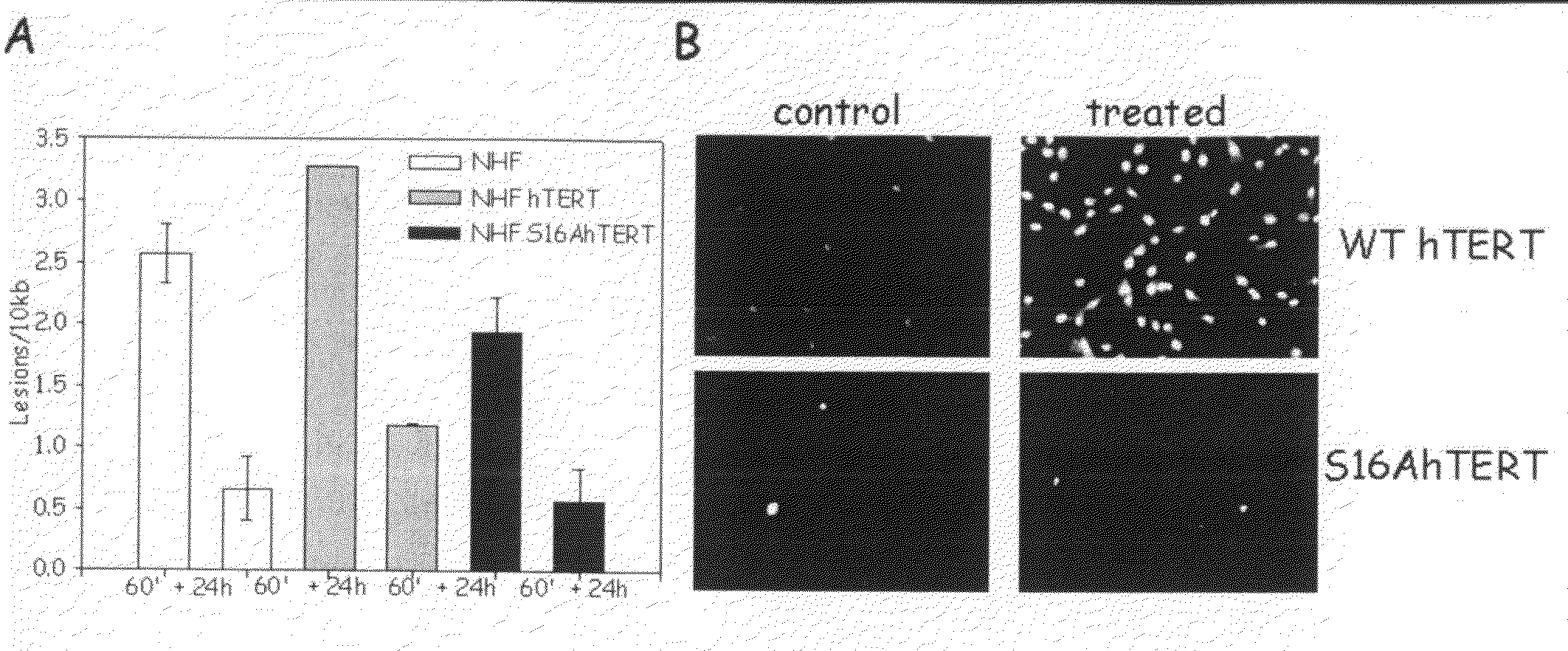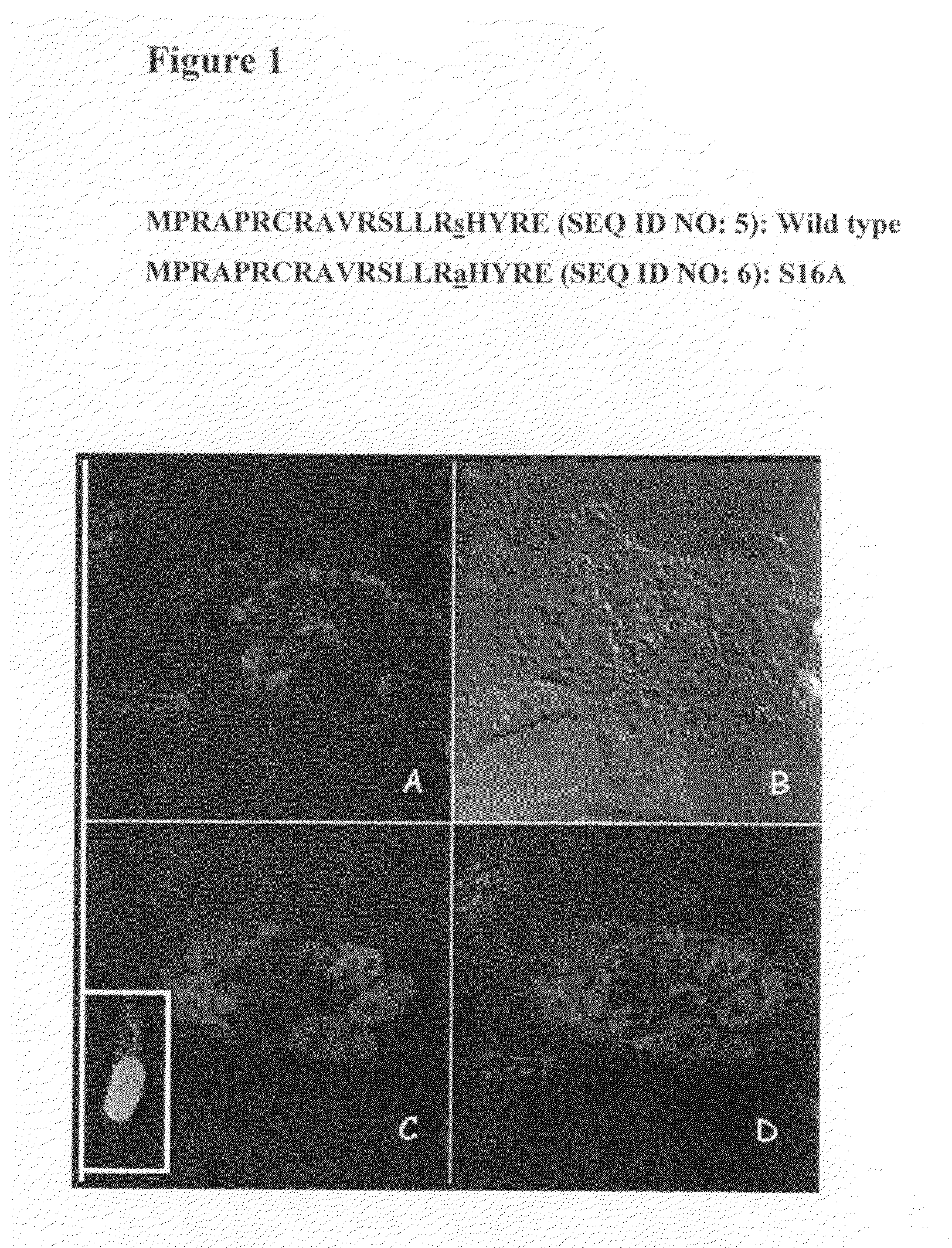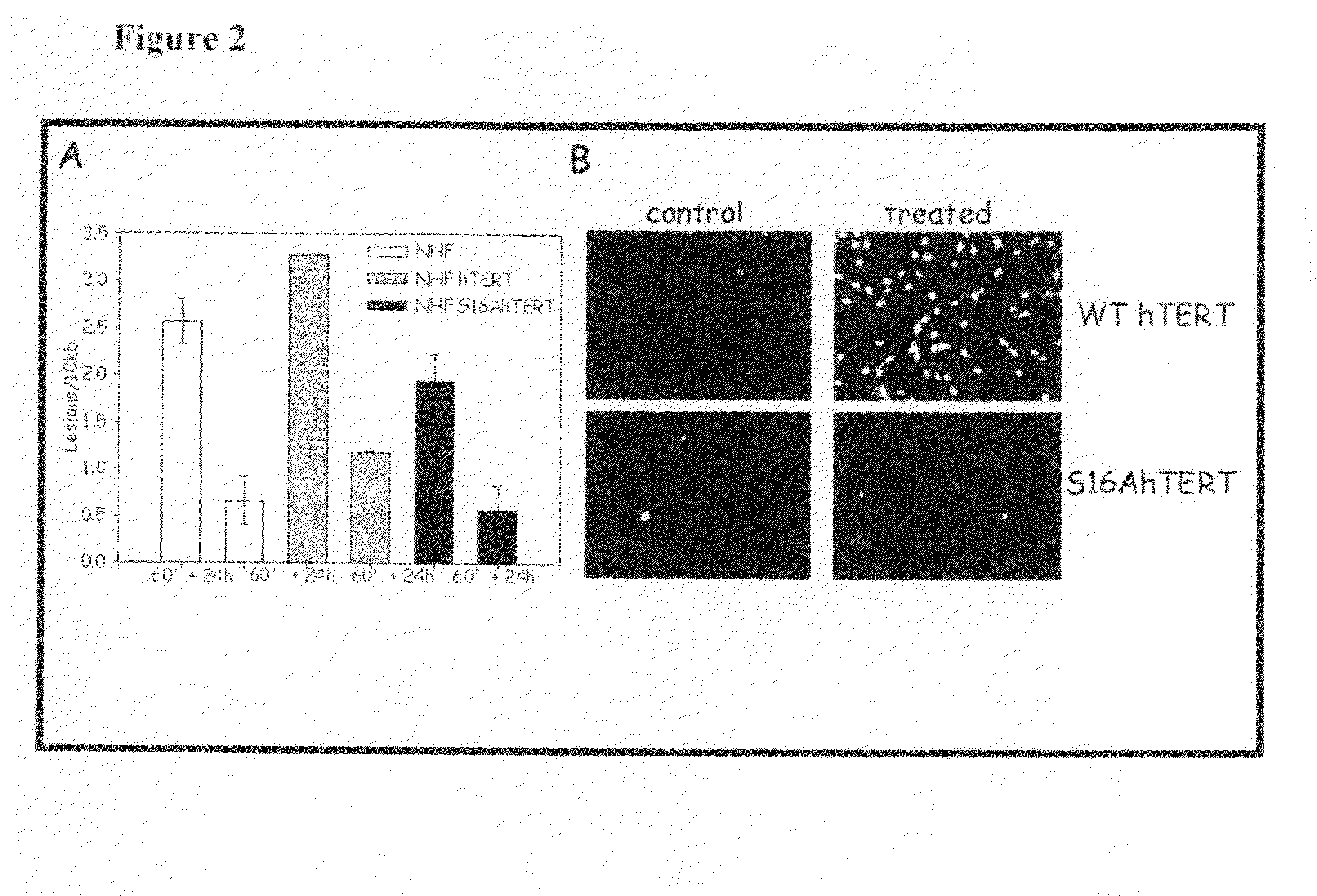Nuclear telomerase reverse transcriptase variant
a reverse transcriptase and telomerase technology, applied in the field of new telomerase genes and proteins, can solve the problems of telomere replication, the complete replication of the end of linear eukaryotic chromosomes presents special problems for conventional methods of dna replication, and the inability of conventional dna polymerases to begin dna synthesis de novo, etc., to achieve reverse graying, reduce wrinkles, and prolong the lifespan of mamm
- Summary
- Abstract
- Description
- Claims
- Application Information
AI Technical Summary
Benefits of technology
Problems solved by technology
Method used
Image
Examples
example i
[0142]Nuclear Only Variant
[0143]The present inventor previously demonstrated that hTERT localized to the mitochondria drives an enhancement of mitochondrial DNA (mtDNA) damage and apoptosis after hydrogen peroxide treatment (H2O2). Indeed, by site-directed mutagenesis of the mitochondrial leader sequence of hTERT (substitution of R at positions 3 and 6 for E, R3E / R6EhTERT) the present inventor created a mutant that is only localized to the nucleus and renders cells resistant to both mtDNA damage and apoptosis induced by H2O2 [Santos et al. (2006) Hum Mol Genet. 15, 1757-1768].
[0144]It is yet unknown how hTERT's subcellular localization is regulated. The present inventor hypothesized that phosphorylation of hTERT would be one means of regulating hTERT's subcellular compartment. Phosphorylation of hTERT on Y707 had been previously shown to make hTERT shuffle from the nucleus to the cytoplasm after H2O2 treatment [Haendeler et al. (2003) Mol Cell Biol. 13, 4598-610]. Additionally, Semy...
PUM
| Property | Measurement | Unit |
|---|---|---|
| length | aaaaa | aaaaa |
| total volume | aaaaa | aaaaa |
| concentration | aaaaa | aaaaa |
Abstract
Description
Claims
Application Information
 Login to View More
Login to View More - R&D
- Intellectual Property
- Life Sciences
- Materials
- Tech Scout
- Unparalleled Data Quality
- Higher Quality Content
- 60% Fewer Hallucinations
Browse by: Latest US Patents, China's latest patents, Technical Efficacy Thesaurus, Application Domain, Technology Topic, Popular Technical Reports.
© 2025 PatSnap. All rights reserved.Legal|Privacy policy|Modern Slavery Act Transparency Statement|Sitemap|About US| Contact US: help@patsnap.com



